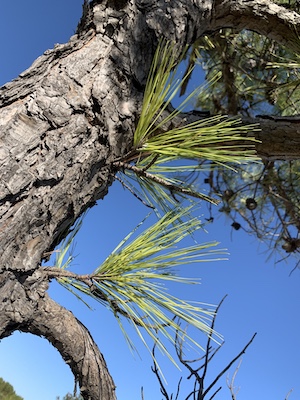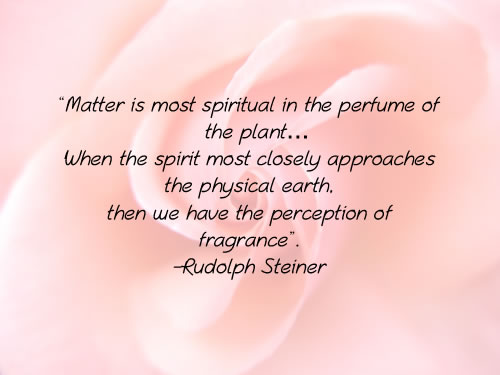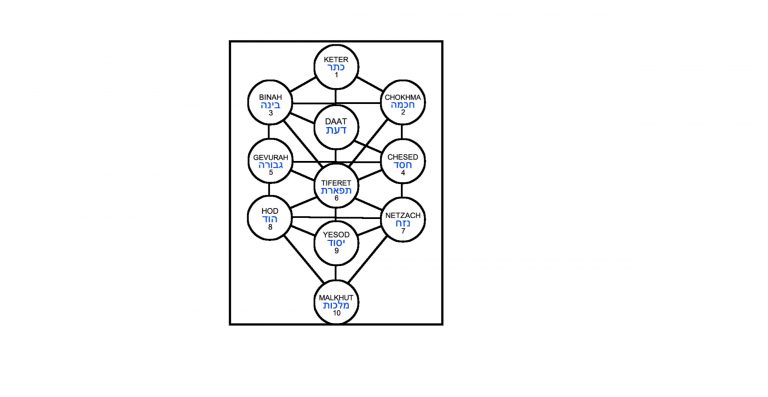Tu B’Shvat
Fifteen Psalms for the Trees
This year, Tu b’Shevat, the birthday of the trees, will fall on the evening of January. 17 and during the day on January. 18.
Quoted from: http://telshemesh.org/shevat/fifteen_psalms_for_the_trees.html
As the new moon of Shevat approaches, the trees begin to awaken just a little, enough to begin the flow of sap. There are even a few buds, under the snow that keeps falling here in New York. The Talmud (Rosh haShanah 2a) tells that in one rabbi’s opinion, the first of Shevat is the new year of trees, while in the majority opinion the fifteenth of Shevat is the trees’ new year. Between these two dates usually falls Feb. 2, or Groundhog Day, or Imbolc, an old Celtic holiday recognizing the first awakening of the earth before spring. As we watch the trees awaken, we remember the Jewish mystical name for God: Etz Chayyim, Tree of Life. “She is a tree of life,” the Book of Proverbs tells, and we may feel the coursing of the Life of the Worlds deeply at this time of year.
As I watch the bare trees outside my window, I remember an old tradition that it is customary to recite the fifteen psalms known as “songs of ascent” (Psalm 120-134) on the fifteen days between the new moon of Shevat (Jan. 29-30) and the new year of the trees (Feb. 12 and 13). Reciting the psalms of ascent on this day mirrors the sap rising in the trees, and also honors the Tree of Life—a kabbalistic name for God. One new practice on Tu B’Shevat, to celebrate all that we learn from trees, might be to associate each of the fifteen psalms with a tree or plant and use the psalm to meditate on the nature of each tree and its teachings for us. The upright date tree, for example, speaks to us of justice, the willow teaches us need, and the blossoming apple teaches us the beauty of the present moment. Each tree-psalm teaches us some of the essence of that tree’s spirit and gift.
The psalms also remind us of the Divine One. The word “Yah” (Divine Breath) also adds up to fifteen. Once, people in the land of Israel worshipped the Divine through trees, calling Her Asherah or Elat. Then Israelites built a menorah in the Temple to celebrate Yah, the Source of Life. Jewish mystics called the Divine life-force Etz Chayyim, Living Tree. We too see in roots, seeds, branches, leaves and flowers an echo of the larger web of life we revere, and so trees are still beings who teach us reverence, joy, and zest for being alive.
The fifteen psalms can help awaken us to our deeper tree-essence over the first two weeks of Shevat. One can also use these psalms in one’s Tu B’Shevat seder as well, by reciting four psalms during each of the first three seder sections (assiyah, yetzirah, and beriah) and three psalms during the last section (atzilut). Or, saying one or more psalms over a living tree might be another way to celebrate the birthday of the trees. Psalms and trees are linked, for a psalm is a cry from the heart bursting upward through the throat into song, and a tree too is a burst of life moving upward toward the sky.
Below, you will find commentaries on each of the fifteen psalms of ascent (you can find the psalms themselves in any Bible) and a prayer to say upon finishing the recitation. A psalm of ascent may be recited on each day from the new moon of Shevat through the full moon of Shevat, to celebrate and honor the sap as it rises. If possible, meditate on the named trees, or read the psalms and connect them to other trees you know and love. Each of the fifteen psalms has an earthy spiritual teaching, related to its tree, that we can learn during Shevat.
Psalm 120, which proclaims: “When my suffering was upon me, I called and God answered me,” mentions a thornbush or rotem. The rotem is the teacher of humility. Some people believe that the rotem is the thorn-bush that burned without being consumed in the days of Moses. Moses turned aside to look at the bush, but them hid his face, for he did not want to look at God. It is written of the thorn-bush that it was the most humble of all plants, and that is why the Shekhinah chose it to dwell in.
Psalm 121 says: “I will lift my eyes to the mountains. From where will my help come? My help is from God, maker of heaven and earth.” This psalm could be associated with the myrtle. Esther, the Persian Jewish queen who saved the Jewish people from persecution, had the Hebrew name of Hadas, myrtle. As Esther was a guardian of life, spreading good deeds, so too the good smell of the hadas restores the spirit, spreading fragrance everywhere. The sweet-smelling myrtle is often used during Jewish rituals ending the Sabbath, to renew the soul as the Sabbath departs. This psalm repeats the word-root “shmor/to guard” six times, just as we wave myrtle leaves in six directions on Sukkot to ask that the Divine presence care for and protect the world.
Psalm 122 says: “I rejoiced when people said to me: Let us go to the house of the Tree of Life. Our feet were standing in your gates, Jerusalem: Jerusalem rebuilt, a city bound all together, where the tribes, the tribes of God made pilgrimage.” Pilgrimage reminds us of the etrog, the good-smelling, bright yellow citron that Jews use on the harvest festival of Sukkot, is the teacher of fertility and union. It is said to represent the human heart, and it also represents the fertile womb. Combined with a palm branch, myrtle, and willow, the etrog represents unity: the unity of Jews with one another, the unity of the four worlds and four directions, and the oneness of creation.
Psalm 123 proclaims: “Look, as the eyes of slaves are on their lord’s hand and as the eyes of a maidservant are on her lady’s hand, so our eyes are toward the Tree of Life our God, until God shall be gracious to us.” This psalm teaches of the reed. When Moses’ mother Yocheved placed her baby son in a reed basket, Miriam watched over the basket, hiding in the reeds (suf), until an Egyptian princess found it and rescued her brother. The reed teaches us to be patient and work toward what we envision.
Psalm 124 proclaims: “If God had not been with us, the waters would have flooded us. This psalm represents the willow. The willow is the teacher of need. The willow, or aravah, is one of the four species used on the pilgrimage festival of Sukkot. On the last day of Sukkot, known as Hoshana Rabbah, celebrants beat the leaves off the willow so that they may receive Divine grace during the coming year, and so that their harvest may receive abundant rain. Some say that the willow represents the lips in prayer.
Psalm 125 says: “Do good, o Tree of Life, to the good, and to the upright in heart. Palm trees are often described as “upright” in the Hebrew Bible. The palm is the teacher of justice. The prophet Devorah, known for her wise judgment, sat under a palm tree while hearing cases. Tamar (whose name means palm tree) was a woman who took justice into her own hands—when her father-in-law Judah refused to allow his third son to marry Tamar and give her children in spite of his agreement, she veiled herself and seduced Judah instead—thus giving rise to the line of King David and of the Messiah. This psalm shows us that we cannot let the scepter of the wicked rest upon us, but must choose to be immovably righteous.
Psalm 126 cries: “Our mouths were filled with laughter, and our tongues with joyful song. The one who walks weeping and carrying the bag of seed, shall come back in joyful song, carrying the sheaves.” This hints at the sweetness of the fig (te’enah). The fig tree is the teacher of return, or teshuvah. The fig tree is the tree that gave leaves to Adam and Eve as garments when the first couple went into exile. Later, when Noah and his family, exiled from their homes, went onto the ark, they took fig saplings with them (Genesis Rabbah 36:3). The fig is a witness to the tears of exile, but also is as sweet as the joy of return–the fig fills the mouth with its sweetness as joyful song fills the mouth with music.
Psalm 127 announces: “If God does not build a house, it is vain for builders to work on it.” The cedar, or erez, is the teacher of sturdiness. Solomon’s temple was built of cedar, as was his palace. A psalm says that the righteous “shall flourish like a cedar in Lebanon.” This means that they shall be sturdy over time. If we do learn calm strength, like the cedar, we will give a gift not only to ourselves, but to others, who will be able to depend on us and learn from us.
Psalm 128 says: “Your wife will be like a fruitful vine in the corners of your home.”
The vine (gefen) is the teacher of blessing and abundance. Jewish festivals are consecrated by blessing a cup of wine, and Jewish tradition regards the grape as a bringer of joy. The Sabbath also begins with the sanctification of wine. Sitting under one’s vine and fig-tree is the ultimate expression of peace and prosperity. In the Song of Songs, the vine blossom is a sign of spring. The vine teaches us to celebrate our blessings and to open our hearts to goodness.Psalm 129 rumbles: “Many have been my troublers from my youth, but they did not overcome me.” This strength relates to the oak (alon). The oak is the teacher of groundedness. When wind and rain come, they do not destroy the great oak. The oak is able to persevere in spite of troubles because of its roots—so too, we need to cultivate our roots in order to stay upright. The oak teaches us to stand firm when inner and outer weather blusters around us.
Psalm 130 calls: “My spirit leans to God more than watchmen to the morning, watchmen to the morning.” The Hebrew word for almond tree (shaked) means “watcher. The almond is the teacher of leadership. In Israel, the almond tree’s flowering is the first sign of spring. In the Bible, God made the high priest’s scepter flower like an almond tree to show that he was the spiritual leader of the people. A leader’s role is to watch over others, but also to watch over him or herself to avoid arrogance.
Psalm 131 teaches: “Have I not focused and quieted my spirit, like those who nurse from the mother?” This psalm evokes the terebinth. The terebinth, or pistacia tree, is the teacher of the cycle of life and death. The terebinth’s name, elah, can be a word for “goddess,” and the elah represents the mystery of God’s hidden womb. In the Bible, the terebinth is often a place of burial–Rebekah’s nurse Deborah is buried beneath a terebinth, and Absalom, David’s son, is killed while his hair is caught in a terebinth tree. Yet angels also reveal themselves beneath terebinths (Genesis 12:6, Judges 6:11). The elah contains the mystery of the tree that is cut down and regrows again. In Isaiah 6:11, we are told that the people shall be cut down “like a terebinth whose stump remains, and in its stump shall be a holy seed.” Every spring, plants that seemed dead come to life again. So too, we are mortal, yet the mystery of life is reborn in us.
Psalm 132 proclaims: “Your priests will wear righteousness and your kind ones will sing with joy.” This recalls the pomegranate, which decorated the hems of the priestly robes in ancient times. The pomegranate is the teacher of the indwelling of God. The fruit itself is an abundant globe full of bright red seeds, like a world full of life. In this psalm, God announces a desire to dwell among human beings, nurture the hungry and care for the needy, establish a just government, and “clothe its priests in deliverance.” These are all ways of acknowledging the Shekhinah. The pomegranate reminds us that we are always filled with seeds of light, and that our lives can be God’s resting-place.
Psalm 133 says: “How good and how pleasant it is when kinsfolk dwell together.
It is like good oil on the head.” The olive, which produces oil, is the teacher of peace. In the mythic tale of Noah, a dove brought an olive branch to announce that the waters had subsided and life on the earth would be renewed. Olive oil was also used to anoint kings, consecrating their monarchy and blessing them that they should have a just and peaceful reign. In Psalm 133, the olive oil represents the peace of friends dwelling together. The olive tree teaches us, even after conflict, always to rededicate ourselves to the forces of life and peace.Psalm 134 calls: “At this moment bless the Tree of Life, all you who serve the Tree of Life.” This signifies the apple tree (tapuach). The apple is the teacher of beauty. Its sweet-smelling blossoms last only a few days, but they are a joy to the senses. The apple tree shows us the glory of the present moment. The Shekhinah Herself, the presence of God, is called the “field of apple trees”—the source of all the world’s beauty. The apple teaches us to be present in the moment—not merely to understand, but to be.
At the conclusion of reading the psalms, you may want to go out and recite this prayer over the trees:
Ilanot tovim bara lehanot bahem benei adam: ata lma’an hamishah-asar ha’tehillim ulema’an yah eitz hachayim ura hasaraf be’anaf. Uru rotem vehadas, uru etrog vasuf, uru aravah vetamar, uru te’enah ve’erez, uru gefen ve’alon, uru shaked ve’elah, uru rimon vezayit vetapuach. Uru kol eitzim ve’ilanot bearba kanfot ha’aretz Ani me’orer (fem. me’oreret) et ha’etzim b’shem etz hachayyim, ki etz chayyim hi lemachazikim bah.
The Divine One created good trees so the children of earth might benefit from them. At this moment, for the sake of the fifteen psalms and for the sake of the Divine Tree of Life, may the sap awaken in the branch. Awake, thornbush and myrtle, awake etrog and reed, awake willow and palm, awake fig and cedar, awake vine and oak, awake almond and terebinth, awake pomegranate and olive and apple. Awake (insert your own varieties). Awake, all trees in all the corners of the earth. I awaken the trees in the name of the Tree of Life, for She is a tree of life to all who hold her fast.
Rabbi Jill Hammer is the director and co-founder of Tel Shemesh and the author of Sisters at Sinai: New Tales of Biblical Women






